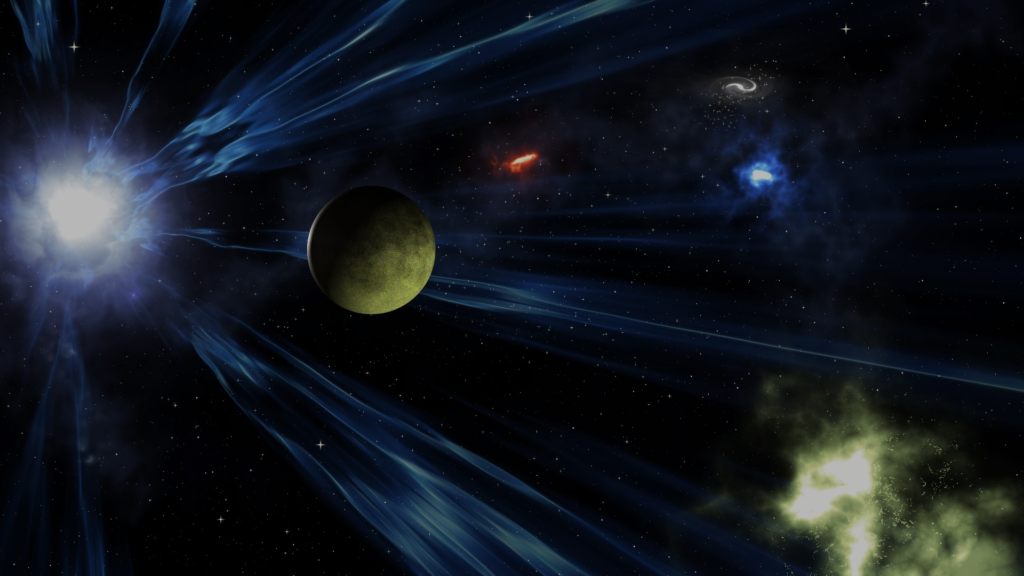## Unveiling the Secrets of Black Holes: Cosmic Vacuum Cleaners
Have you ever imagined a place where gravity is so strong that not even light can escape? That’s the mind-bending reality of a black hole, one of the universe’s most fascinating and mysterious objects. These cosmic vacuum cleaners warp spacetime itself, creating regions of infinite density where our known laws of physics seemingly break down. But how do these enigmatic behemoths form? Let’s dive in and explore the mysteries surrounding these captivating celestial giants.
### 1. The Stellar Genesis: How Black Holes Are Born
Most black holes are born from the death throes of massive stars. Imagine a star many times larger than our Sun, burning furiously through its nuclear fuel. When this fuel runs out, the star can no longer support its own immense weight. The core collapses catastrophically, a process so violent that it triggers a supernova – a spectacular explosion visible across vast cosmic distances. If the remaining core is sufficiently massive (more than about three times the mass of our Sun), gravity overwhelms all other forces, crushing the matter into an incredibly tiny space: a black hole. Think of it like squeezing a giant beach ball down to the size of a marble – the same amount of stuff, but infinitely denser!
### 2. The Anatomy of a Black Hole: Event Horizon and Singularity
A black hole is characterized by two key features: the event horizon and the singularity. The event horizon is the point of no return. Anything crossing this boundary, including light, is irrevocably pulled inwards. Imagine it as a one-way street into the abyss. Beyond the event horizon lies the singularity – a point of infinite density at the very center of the black hole. Our current understanding of physics breaks down at the singularity, making it one of the biggest unsolved mysteries in science.
### 3. Supermassive Black Holes: Giants Among Giants
While stellar-mass black holes form from the collapse of individual stars, there’s another class of black holes called supermassive black holes. These behemoths reside at the centers of most galaxies, including our own Milky Way. They can have masses millions or even billions of times that of our Sun! How these supermassive black holes form is still debated, with leading theories suggesting they might arise from the merging of smaller black holes or from the direct collapse of massive gas clouds in the early universe.
### 4. Observing the Unseen: Detecting Black Holes
You can’t see a black hole directly because, well, it doesn’t emit light. But we can infer their presence through their gravitational effects on nearby matter. For example, we can observe stars orbiting incredibly fast around an invisible, massive object, indicating the presence of a black hole. Also, the intense gravity of a black hole can heat up surrounding gas and dust, causing them to emit X-rays that we can detect with telescopes. Recently, the Event Horizon Telescope captured the first-ever image of a black hole’s shadow, a stunning achievement that confirmed our theoretical understanding.
### 5. Black Holes: Not Just Cosmic Destroyers
While black holes might sound terrifying, they play a crucial role in the evolution of galaxies. Their immense gravity shapes the distribution of stars and gas within galaxies, influencing their overall structure and growth. They also act as powerful engines, powering some of the most energetic phenomena in the universe, such as quasars – incredibly bright objects powered by supermassive black holes devouring matter.
**In Summary:** Black holes are truly remarkable objects. Their formation, structure, and effects on the universe are areas of intense research, pushing the boundaries of our understanding of physics and cosmology. From the death of stars to the hearts of galaxies, black holes offer a window into the most extreme environments in the cosmos.
**What are your thoughts on black holes? Share your ideas and questions in the comments below! And for those keen to explore further, I recommend checking out resources like NASA’s website or searching for documentaries on black holes – prepare to be amazed!**


